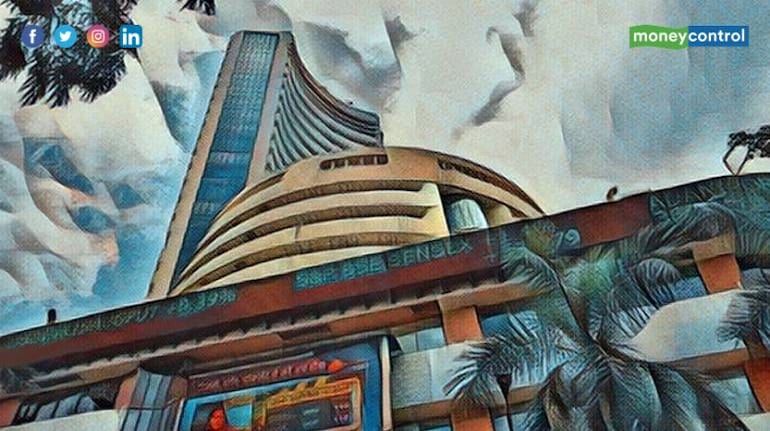



“Benign neglect is the secret to long-term investing success.” - Charles Ellis
Bank stocks powered the indices higher on Monday, but a closer look shows that even the banking story may be slowly running out of steam. It still remains the best when compared to other sectors, but the market may not be willing to overpay for banks amid murmurs that the economy is slowing down.
Cement capex
There has been a steady flow of news from the cement sector over the last week. Shree Digvijay Cement has got environmental clearance from expanding existing capacity at its cement and clinker plant. Dalmia Bharat has commenced production at its second cement line at Bokaro, Jharkhand. Shree Cement has upgraded its cement plant capacity to 46.90 mtpa at Saraikela, Jharkhand. UltraTech Cement has commissioned a 2.2 mtpa brownfield expansion in Patliputra, Bihar.
The Adani group putting its ambitious expansion plans for Ambuja and ACC on hold may have eased over capacity fears somewhat, but capacity is steadily going up.

According to rating agency India Ratings, industry capacity utilisation will be at 70 percent this year because of the capex plans lined up. Demand is expected to remain steady, but there is supply coming in as well, which means a sharp upswing in cement prices look unlikely. But falling raw material prices and hopes of M&A activity could keep bulls interested in the sector.
Not impressed
IndusInd Bank has been talked about as a rerating story for a while now but looks like investors will need to show some more patience. The bank reported a decent set of fourth quarter earnings, but the stock still ended down on a day when the banking sector was a clear favourite. Morgan Stanley has flagged the significant increase in the loans that have become non-performing, and a moderation in the current account savings account ratio as the key negatives
Bank Nifty bets
Bank Nifty was the best performing index on Monday and the options charts indicate that too many traders are betting on the index to maintain its uptrend over the next couple of sessions.
Most out of the money (OTM) strikes above 42,000 have seen massive put writing while call writers have vanished, observed Rahul Ghose, a Mumbai-based algo trader. “Traders are going into the expiry with a strong directional bias on this Index,” he told Short Call.
Meaning, traders are expecting a huge rally in Bank Nifty during this week. But will that fructify, is the big question. The market response to stellar quarterly earnings from ICICI Bank suggests that the best may have already been priced in for the banking sector in general. DSP Investment’s Vineet Sambre told CNBCTV18 that banks’ net interest margins are likely to peak in the next one-two quarters.
Costly escape
The adage, there are no free lunches, rings true for the bailout of First Republic. The bank may have dodged a bullet, but the new lease of life has come at a price. According to the Wall Street Journal, the bank can survive but not thrive for the foreseeable future because of the costs of the rescue. When First Republic started haemorrhaging deposits, it plugged the leak by borrowing heavily at high rates from the Federal Reserve, the Federal Home Loan Bank and JPMorgan Chase & Co.
That hurt its profitability, and to rebuild that First Republic has to start shrinking its balance sheet and paying down that expensive funding. Many securities or loans on its balance sheet could likely be sold only at a steep discount, generating losses.
Crypto views
Tech investor Chamath Palihapitiya has declared the death of crypto in the US, blaming it on regulators for being too aggressive in going after the bad actors in the industry, reports CNBC.com. Two years ago, Chamath had said that bitcoin had replaced gold and predicted the digital currency would climb to $200,000.
Chamath’s view is stark contrast to that of Standard Chartered analyst Geoff Kendrick, who has declared the end of the crypto winter and sees bitcoin hitting $100,000 by end of 2024.
From CNBC.com
“The current stress in the traditional banking sector is highly conducive to Bitcoin outperformance – and validates the original premise for Bitcoin as a decentralised, trustless and scarce digital asset,” Kendrick said in his note.
The VIX Fix
Wall Street’s ‘fear gauge’ is getting a younger sibling. Exchange group CBOE is all set to launch VIX1d, or the one-day Volatility index, which will track the expected volatility in S&P 500 for the next day of trading, reports Financial Times. The original VIX, launched 30 years ago, measures expected volatility over the next month.
CBOE said the new index is in response to a surge in the Zero Day to Expiry options trading, for the which the traditional VIX is an inadequate indicator.
That’s all very good, but wouldn’t the VIX1d be more volatile, as all younger siblings are? Perhaps there should be an index to gauge traders’ heart rate and BP levels next.
Metal wars
After the US, Germany now is trying to reduce reliance on China for supplies of raw materials critical to the nation’s green transition. It plans to set up a state fund worth up to €2 billion ($2.2 billion) to support mining of raw materials like cobalt, copper, lithium, silicon and rare earth metals, reports mining.com.
“After Germany’s dependence on Russia for natural gas became a painful liability following the invasion of Ukraine, officials in Europe’s largest economy have started to view supply chains and raw materials increasingly as a matter of national security.”
Shubham Raj and Abhishek Mukherjee contributed to this piece
Discover the latest Business News, Sensex, and Nifty updates. Obtain Personal Finance insights, tax queries, and expert opinions on Moneycontrol or download the Moneycontrol App to stay updated!